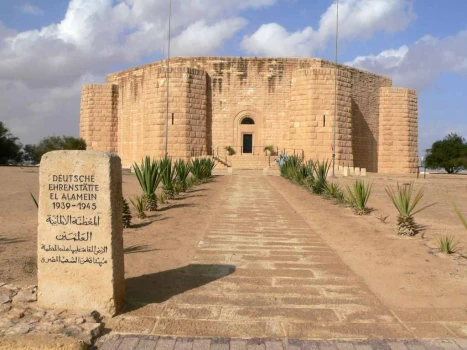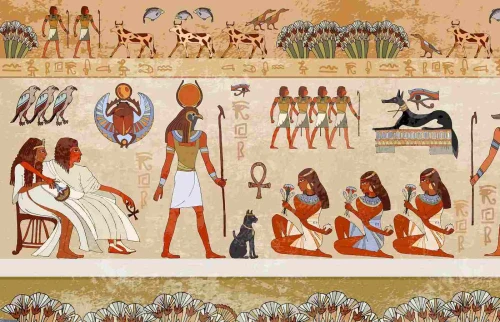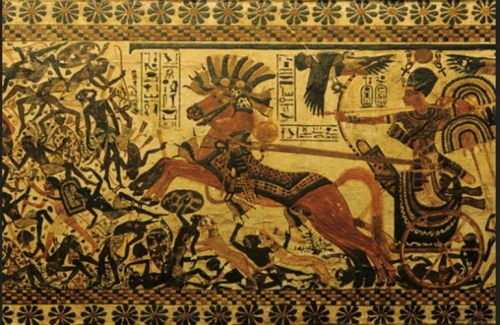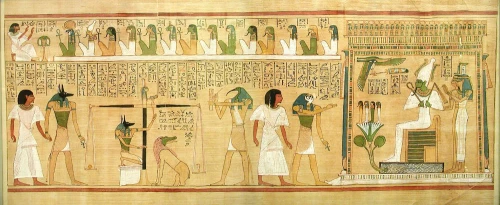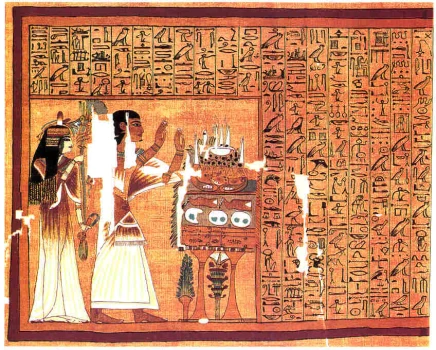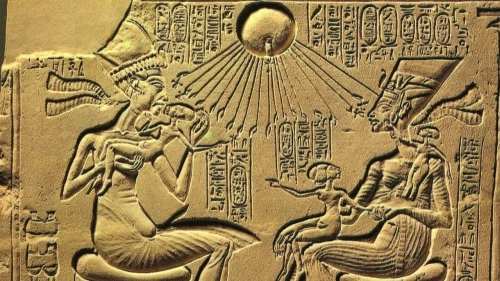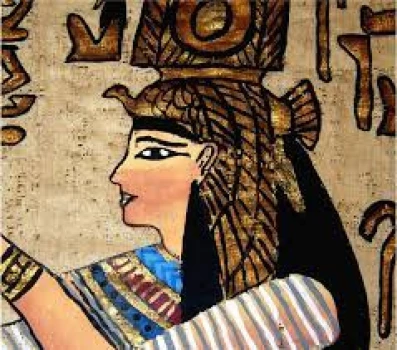
COSMETICS Of great importance in religious rituals, cosmetics eye paint.
unguents, perfumes, and precious oils were used in daily life as well. Scenes carved on temple walls show the ritual of honoring the god. At dawn each day, a procession of priests who had been ritually cleansed and anointed with unguents walked through the temple, entered the holy of holies, opened the shrine, and removed the cult statue. The image of the god was adored, cleansed, anointed with green and black eye paint, and clothed in pure linen. Then the cult statue was returned to the shrine, and the doors were sealed. The magical properties of eye paint were written in the Pyramid Texts. Utterance 79 provides Unas, the deceased king, with eye paint for the next world: Say four times, Osiris Unas, the sound eye of Horus is being rubbed on the face. [Given to you are] Two bags of green eye cosmetics. The Book of the Dead contained instructions to the deceased about to enter the Hall of Two Truths:
This is the way to act toward the Hall of the Two Truths. A man says this speech when he is pure, clean, dressed in fresh clothes, shod in white sandals, painted with eye-paint, anointed with the finest oil of myrrh.
Egyptians were fond of eye paint and applied it daily as an adornment. A verse from the Beginning of the Songs of Entertainment tells us just how important eye paint was.
I wish to paint my eyes, so if I see you my eyes will glisten. When I approach you and see your love, you are the richest in my heart.
Both men and women wore eyeliner, applying it to the upper and lower lids, and then drawing a line that trailed onto the temple, enhancing the shape of the eyes. Originally the favored color was green, thought to have health-giving and magical properties, but black gained popularity at the end of the Eighteenth Dynasty. The composition of both colors is known: ground malachite produced green, and ground galena (lead sulfide) produced black to silvery-gray powder that was mixed with fat to form a thin paste and stored in cosmetic jars. Small wands of wood, ivory, or bone were dipped into the jars and used to apply the eyeliner. Women colored their lips with a brush dipped into a paste of red ochre and fat. Although scholars are not certain, the red lips on some male statues may indicate that men painted their lips as well. Red ochre was also applied to the cheeks. Henna, is still used today to color the hands and feet of modern
COSMETICS
bridal parties colored the nails of ancient Egyptians. The base of Egyptian cosmetics was fat, and it was thick and difficult to remove, so a cleansing cream was concocted from powdered limestone and light vegetable oil to remove the cosmetics. Elaborate inlaid wooden cases held stone or faience (ceramic paste) cosmetic jars in individual compartments, along with a hand mirror of highly polished metal. Mirrors (called ankh in Egyptian) were circular, with wood, metal, ivory, or faience handles, and they were often in the shape of a papyrus column. The perfume was an essential component of every cosmetic case and was used liberally.
By distilling the essence of flowers (or any fragrant substance), the Egyptians had the base for their perfume, which was then added to various oils. Analyses of ancient perfumes show that iris root or balsam was used as a base. Sometimes cinnamon, cardamom, myrrh, honey, wine, or flowers were used to create fragrances. Banquet scenes on tomb walls show ladies adorned with cones of perfume. A cone of fat impregnated with perfume was placed on a woman's head, and as the evening progressed, it melted into her wig, releasing a pleasant aroma.
 English
English
 Spain
Spain

